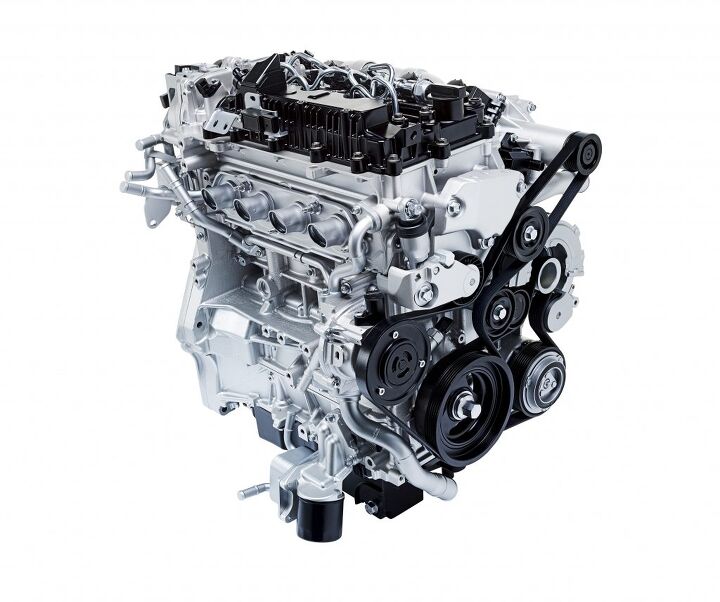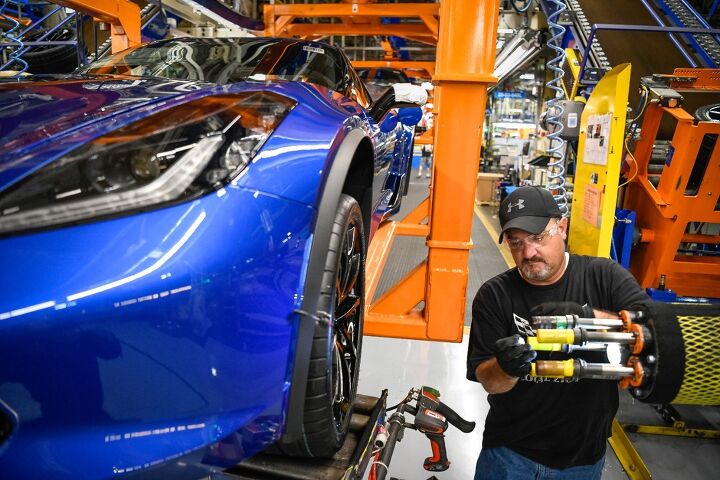#Delays
Mazda's U.S. Skyactiv-X Arrival Definitely Delayed
While other manufacturers are downsizing engines and sticking turbos anywhere they’ll fit, Mazda has attempted to maintain a home for naturally aspirated motors — engines it believes should be sized appropriately for their intended application. On paper, this appears to be giving the competition an edge. Yet Mazda remains committed to offering the right tool for the job, introducing naturally aspirated Skyactiv engines with unusually high compression ratios. The latest, Skyactiv-X, combines spark-controlled gasoline combustion and compression-ignition diesel tech with a 24-volt mild-hybrid system.
The system delivers 178 horsepower and 164 lb-ft of torque in 2.0-liter guise, plus MPG improvements of up to 20 percent vs the old Skyactiv-G. But there’s a problem. With Mazda attempting to go upmarket, an economy-focused powertrain has to deliver in whatever region it’s sold, and introductory Skyactiv-X units are now viewed as too small for the United States. The result? The technology’s delayed arrival in North America, despite its deployment via the new 2.0 liter found in the 2020 Mazda 3 and CX-30 sold in Japan and Europe.
Product Postponement: Everyone's Worried About GM Strike Delays
Industry analysts are becoming concerned that General Motors’ ongoing row with the United Automobile Workers will negatively impact its production commitments. Officially, the automaker has a surplus allowing it to endure strike conditions for a few more weeks. But it’s also supposed to preparing SEMA vehicles and readying production of the new, mid-engined Chevrolet Corvette Stingray — none of which have any back catalog to draw from.
While GM had 80 days worth of inventory at the start of October to help tamp down any panic, numerous models aren’t included in that pool. The C8 Corvette is supposed to launch this year, with volumes ramping up through early 2020. But orders for the outgoing C7 are backing up due to the UAW strike, requiring the automaker to finish those before retooling Bowling Green Assembly for the C8. That could further stall the Stingray’s arrival date, which was already a little nebulous.
And that’s just the tip of the iceberg.
Volkswagen Golf Delay Attributed to Software Glitches, Internet Connectivity
Earlier this year, Volkswagen announced that the launch of the Mk8 Golf would be delayed until 2020 as it continues working on the vehicle’s upgraded tech features. VW intends to launch the car with an entirely digital cockpit, even on base models, alongside perks like permanent internet connectivity and advanced driving aids. It’s all part of a bid to make the Golf even more appetizing when compared to upscale rivals than it already is.
At the time, VW said certain technical issues needed to be ironed out before the next-gen Golf was ready to hit the road, but was adamant that software gremlins were not to blame. The issue came down to the advanced nature of the new technologies, not glitches.
Never take an automaker’s word for it.
Chevrolet's C8 Corvette Reportedly Delayed for Six Months
It was long assumed that the 2020 Chevrolet Corvette would premiere at the North American International Auto Show next month. However, General Motors recently confirmed this was not to be. In fact, it doesn’t appear as though the automaker has any big announcements scheduled for the event. Did something go wrong?
Big time, according to GM Authority. The outlet claims the C8 Corvette’s engineering team found a major electrical issue that stymied development. Anonymous sources hinted that the current system isn’t robust enough to carry the load necessary to support all of the car’s components simultaneously.
Acura TLX Launch Delayed Until Later This Summer
Acura fans hoping to ditch their TL or TSX for an all-new 2015 TLX in time for the start of the summertime driving season will have to make do until sometime later this summer, as the automaker has delayed the launch of its newest sedan.




















Recent Comments